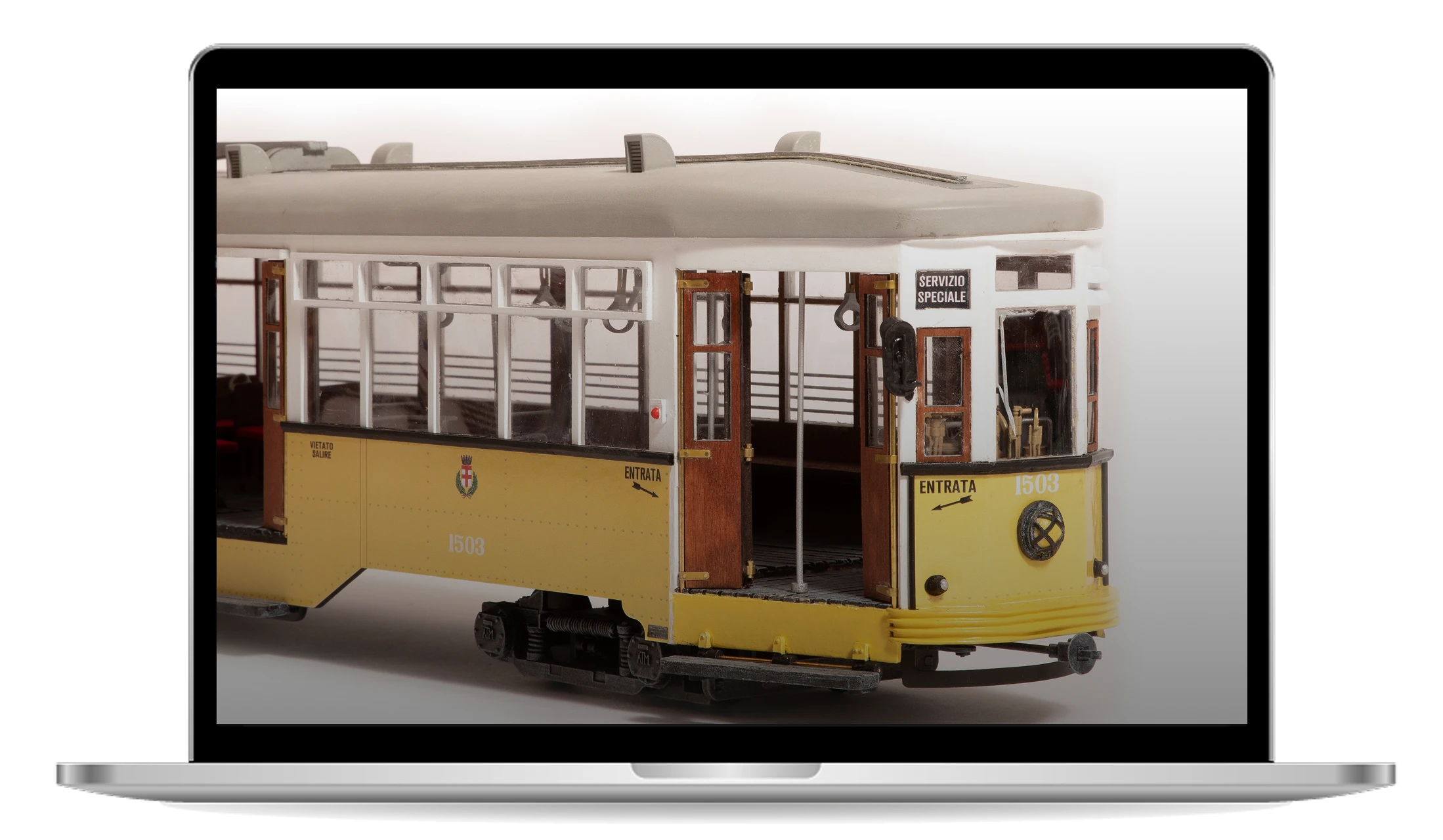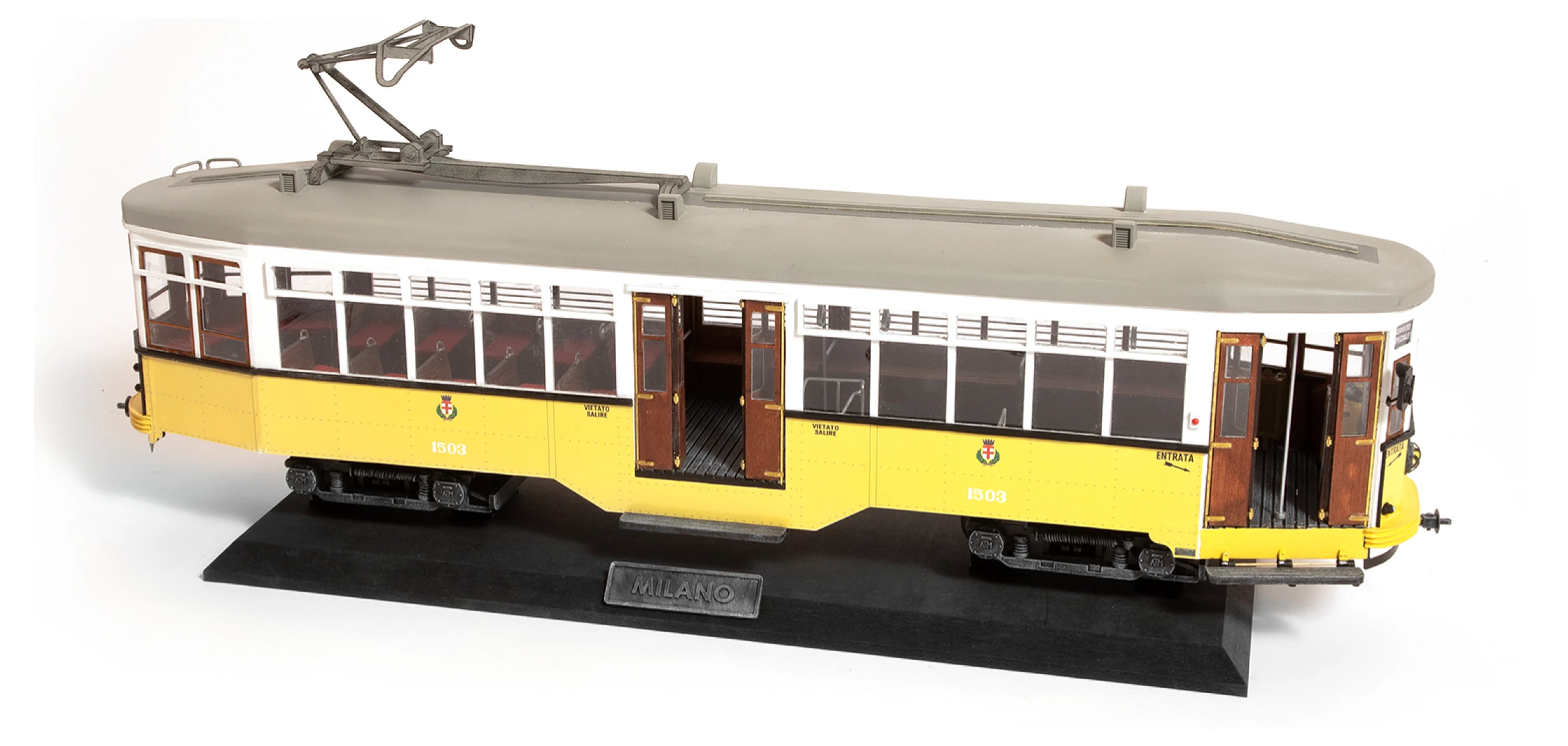

Relive an era that encapsulates the classic elegance and innovation of the 1920s.
AN ICON ON THE RAILS
A WINDOW INTO MILAN’S PUBLIC TRANSPORT HISTORY
A model kit designed for hobbyists who appreciate every detail as part of a living historical icon that has stood the test of time.
Build a model that embodies classic elegance and innovation—ideal for those who seek to construct not just a tram, but a living piece of history.
TECHNICAL SPECIFICATIONS
Difficulty: INTERMEDIATEConstruction time Approximately 480 hours.
Number of pieces 973 pieces



Its original 1920s design, with velvet seats, evolved to meet 21st-century needs while maintaining its classic charm. Even during the darkest times, such as the bombings of World War II, the Ventotto remained standing and returned to the streets as a symbol of resilience.
In the 1920s, Milan faced increasing urban traffic. To meet this demand, the Ufficio Tramviario Municipale (UTM) decided to introduce high-capacity trams, inspired by American designs.
Thus, the 1500 series, known as “Ventotto”, was born. The first prototypes appeared in 1927, with mass production beginning in 1929. These units were so effective in solving Milan’s growing traffic issues that UTM ordered 500 more units from six different manufacturers, aiming to replace the old Edison trams.
Since the final design was completed in 1928, these trams were officially named the 1500 series, type 1928, or simply “Ventotto” (Italian for twenty-eight). They were also called “Carrello” (bogie), as they were the first Milanese urban trams equipped with a bogie system.
All these trams were delivered between 1929 and 1930, achieving massive success. Demand increased so much that UTM had to keep 200 Edison trams in service. Initially painted light brown and cream, they were repainted in light and dark green from 1930 onwards due to a government decree.
The tram’s current collector was the classic trolley pole, known in Milanese dialect as “perteghetta”. One unit was even tested in Frankfurt (Germany), while car No. 503 was built for Brussels Tramways, later sold to Madrid.
Today, the Ventotto still operates—not just as a means of transportation, but as a cultural and heritage icon.

STEP-BY-STEP VIDEOS
On our YouTube channel, you'll find the necessary guidance to assist you through each step of the construction of this model.


The Milano Tram is a must-have for those who appreciate history and engineering, evoking nostalgia, authenticity, and the thrill of reviving a legend on rails.
 + 4.7 out of over 5,000 reviews
+ 4.7 out of over 5,000 reviews













































